Sunuwar in Nepal
Revitalizing a South Asian language with Unicode: Sunuwar in Nepal
The Sunuwar, or Koĩts‐Lo, language is spoken by 37,900 users (2011 census) in Nepal, and Sikkim, India. The Sunuwar language is classified by the EGIDS scale as a “threatened” language, indicating the language is losing speakers.
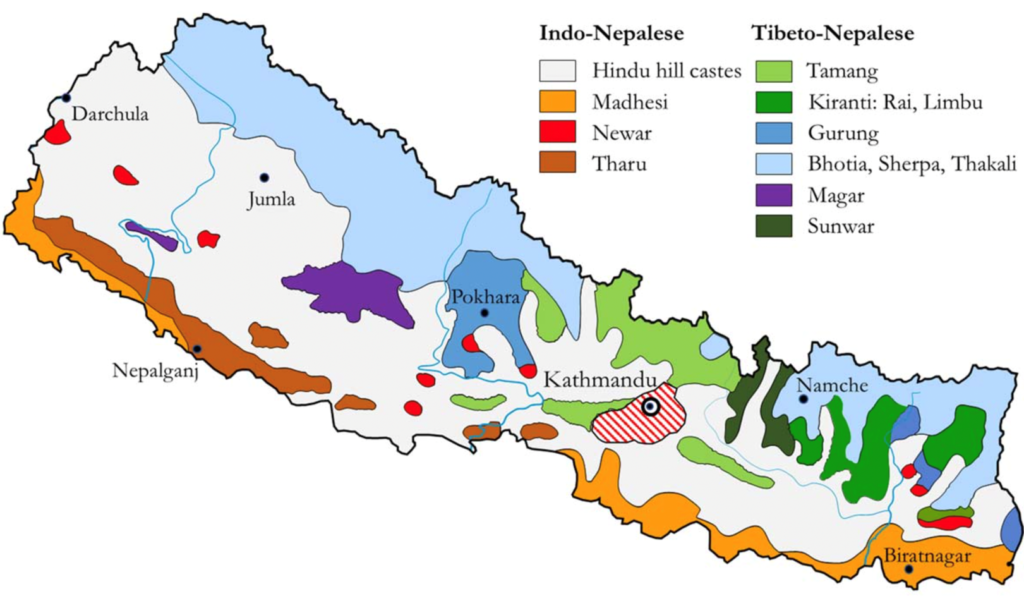
“Sunuwar, as well as several other scripts of smaller language communities in Nepal, are not in the Unicode Standard, which means creating and exchanging text in the script electronically is very difficult.“
Deborah Anderson* and Dev Kumar Sunuwar
image from Wikipedia
History
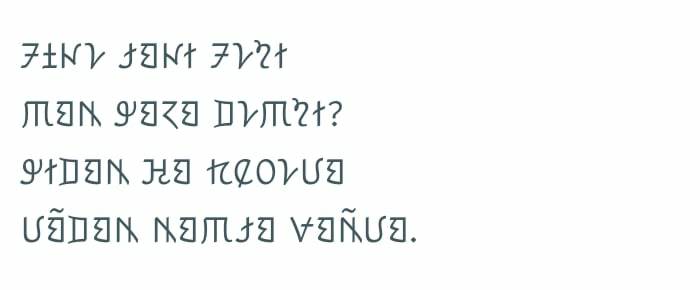
Currently, 24 school curricula in different languages have been created, but the medium for these materials for different languages ‐‐ including Sunuwar ‐‐ is in the Devanagari script.
This situation is due in part to the history of language policies in Nepal, which did not encourage use of scripts other than Devanagari.
1940s
Although Sunuwar is primarily oral language, a script called “kõits brese” was devised for the language in the 1940s.
1960s and 1970s
This script was promoted in the 1960s and 1970s, but these efforts were hindered by Nepal’s one-language policy: ek bhasha, ek bhesh, ek dharma, ek desh. (“one language, one way of dress, one religion, one nation”). This “one-language” policy implied the use of the Devanagari script, which is used to write the official Nepali language. The policy lasted until 1990.
2000s
The Government of Nepal developed various plans that promoted mother tongue multilingual education.
Digitization and Unicode
The Sunuwar Welfare Society, which was established in 1988, has long envisioned having the language move from a primarily oral language to one whose written version can be sent and received on various digital platforms. Digitization will help to preserve the language and its script, and strengthen the distinct Sunuwar identity.
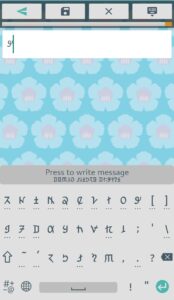
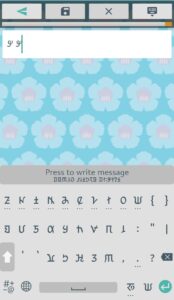
The Translation Commons project
In 2020, Translation Commons, a partner with UNESCO’s International Year of Indigenous Languages and International Decade of Indigenous Languages, selected Sunuwar for a pilot project to demonstrate the scalability of encoding scripts for Indigenous languages and has facilitated the Sunuwar encoding project.
A key first step
A key first step towards digitization was to get the Sunuwar script included in the Unicode Standard, a universal encoding system that allows text to be transmitted across digital devices. Fortunately, a Unicode proposal had earlier been written in 2011 by language advocate Anshuman Pandey. The proposal was reviewed in 2020 by a core team of linguists, educators, activists, journalists, and language practitioners who are members of the Sunuwar Welfare Society.
Unicode Proposal
Regular meetings took place between Dev Kumar Sunuwar (Indigenous Media Foundation), Anshuman Pandey and Deborah Anderson (Script Encoding Initiative / Universal Scripts Project), Craig Cornelius (Google), and Jeannette Stewart (Translation Commons) which ironed out questions for the final Unicode proposal, a font, and keyboard.
On Jan. 25, 2022, the proposal was approved by the Unicode Technical Committee for a future version of the Unicode Standard.
Challenges
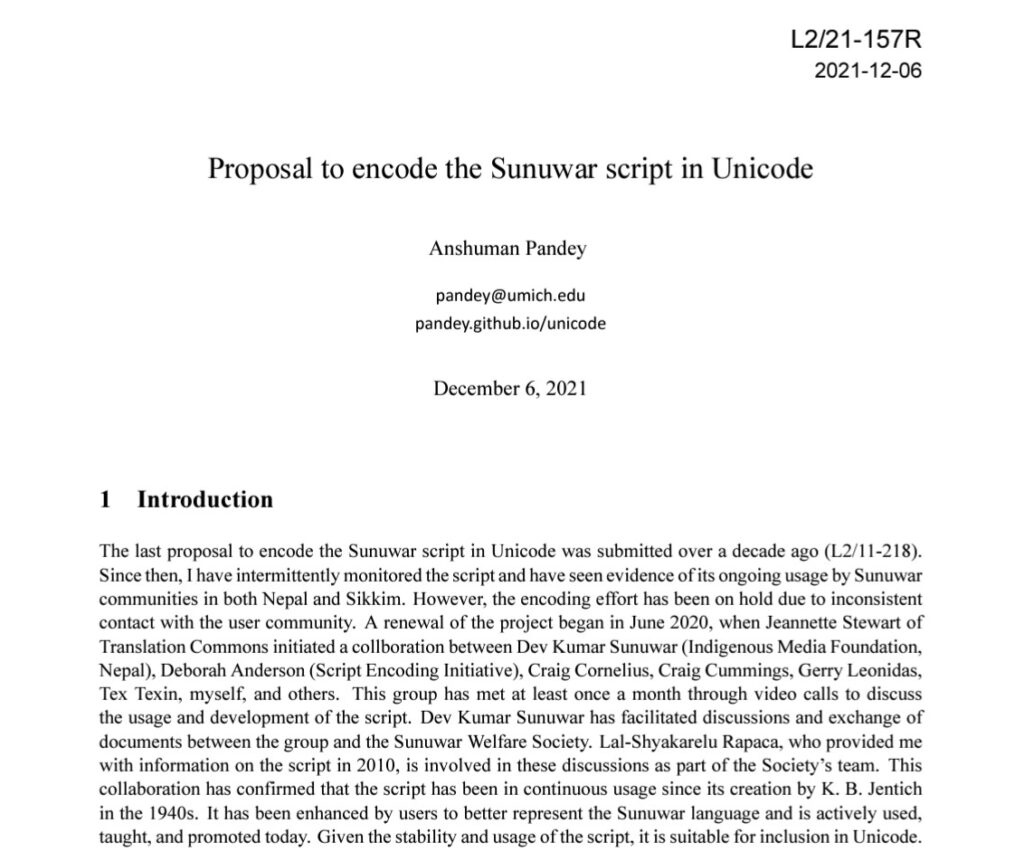
To be approved for inclusion in Unicode, evidence showing usage of the script is needed. Being primarily an oral language used widely in the home, Sunuwar does not have an extensive written tradition, nor has it been widely used in Nepal. Promising signs of Sunuwar’s recent usage include:
①
Creation of a keyboard and PUA‐based font, which can be used to develop more written materials
②
Appearance in 2021 of a monthly magazine Hamso in Sunuwar and Devanagari scripts (in the Sunuwar language)
③
Creation of YouTube instructional videos and in‐person classes on the script, and an alphabet book.
